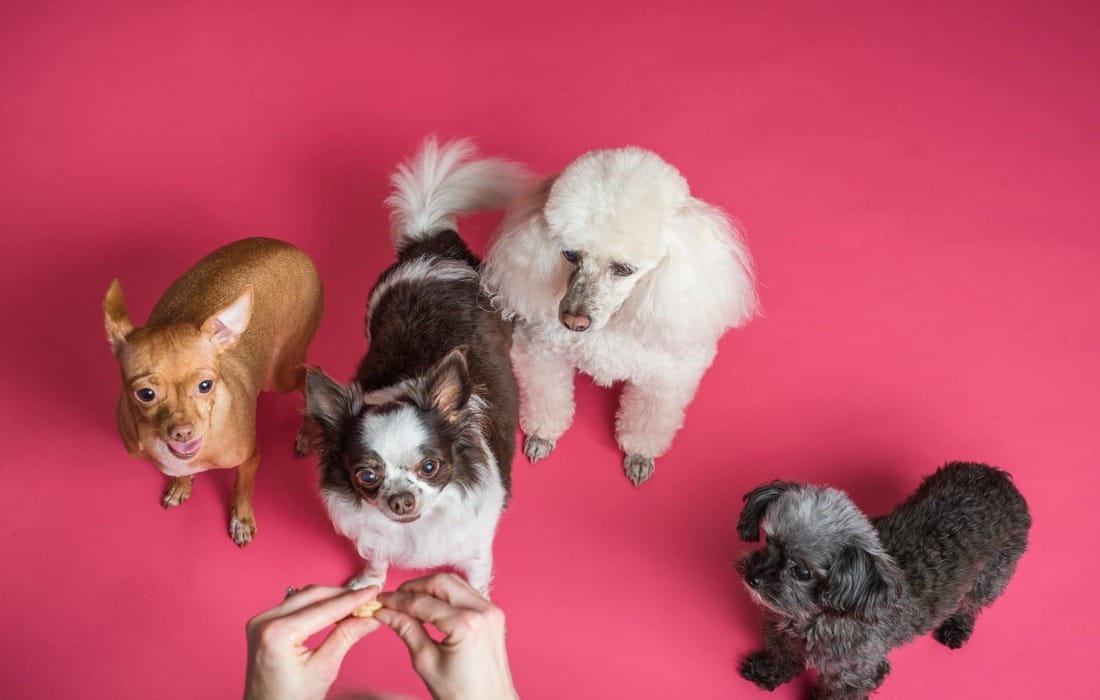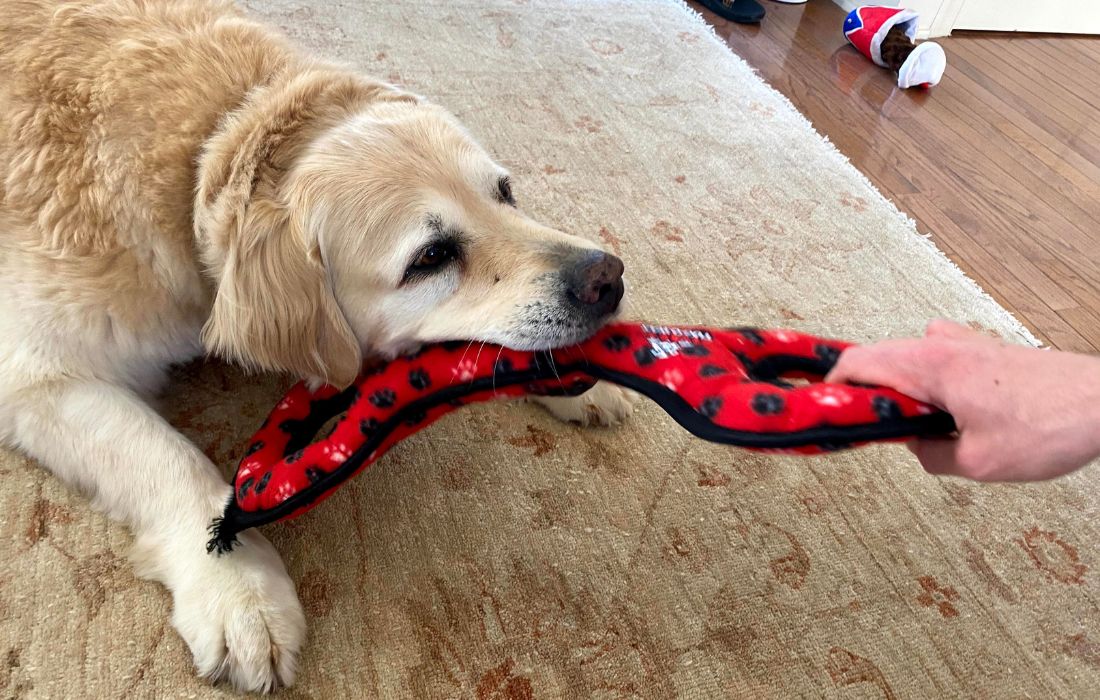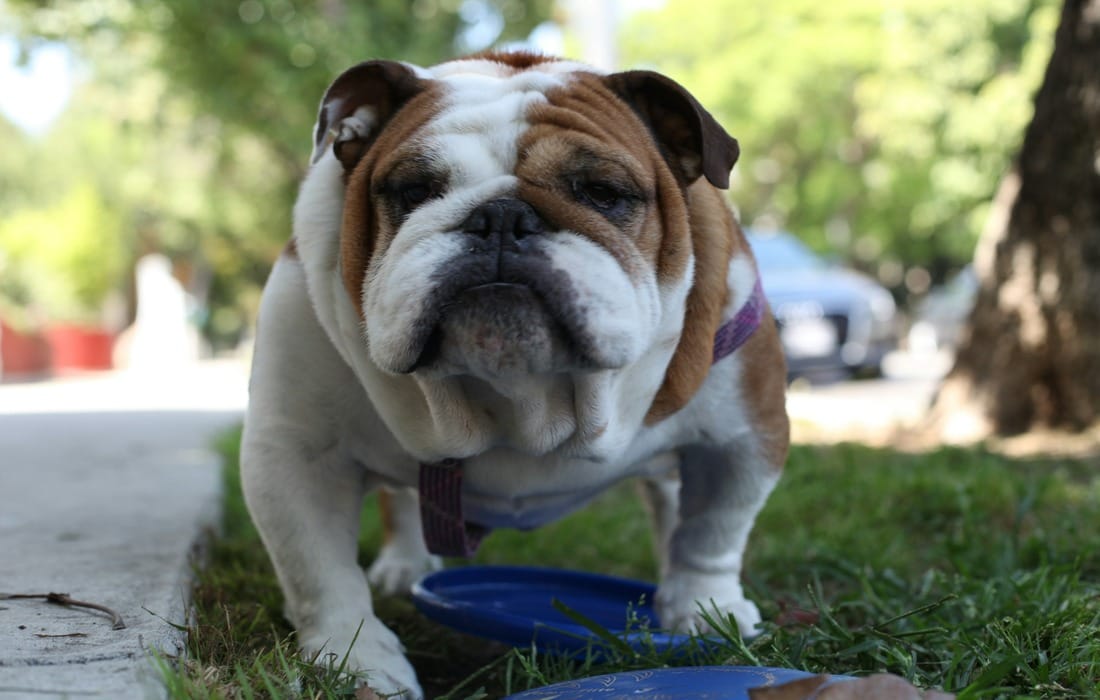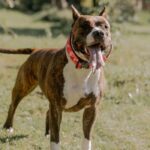Dog agility training is an exciting, fast-paced sport that not only enhances your dog’s physical abilities but also builds a stronger bond between you and your furry friend. In this ultimate guide to dog agility training, we’ll cover everything you need to know—from the basic principles to advanced techniques—so you can transform your dog into an agility champion.
Whether you’re training for fun or competitive events, agility is a fantastic way to provide your dog with mental stimulation, physical exercise, and socialization opportunities. With the right approach and a little patience, any dog can learn the skills needed to navigate an agility course with precision and speed.
What is Dog Agility?
Dog agility is an obstacle course competition in which dogs are guided by their handler through a series of jumps, tunnels, weave poles, and other equipment. The goal is for the dog to complete the course as quickly as possible, while adhering to specific rules and maintaining accuracy.
The sport is timed, and dogs are penalized for errors such as knocking down obstacles or missing a section of the course. However, it is not just about speed; precision and teamwork are key to success in dog agility.
Benefits of Dog Agility Training
- Physical Exercise: Agility is a fantastic way for your dog to burn off energy. The varied obstacles work different muscle groups, improving your dog’s overall fitness and stamina.
- Mental Stimulation: Agility training challenges your dog’s mind as much as it does their body. It encourages problem-solving, focus, and concentration, all of which help your dog stay mentally sharp.
- Improved Communication and Bonding: Agility training is a team sport. You and your dog will develop a deeper understanding of each other’s movements, body language, and cues, leading to better communication and trust.
- Behavioral Benefits: Engaging in regular agility training helps to correct unwanted behaviors, like excessive barking, chewing, or digging, by redirecting your dog’s energy into a constructive activity.
- Socialization: Dogs that participate in agility classes or competitions interact with other dogs, which can improve their social skills and reduce behavioral issues stemming from fear or aggression.
- Fun and Rewarding: Agility is a fun and fulfilling activity for both you and your dog. It can be incredibly rewarding to watch your dog master new skills and excel in an obstacle course.
Getting Started with Dog Agility Training
Before you dive into agility training, it’s important to lay the foundation with some basic steps and preparation. Here’s how to get started:
1. Ensure Your Dog is Ready
While most dogs can benefit from agility training, not all dogs are ready for the challenges it presents. Puppies and senior dogs, for instance, may require special consideration in terms of their physical abilities. Always consult with your veterinarian before starting agility training, especially if your dog has any existing health issues.
That said, some of the key qualities that make a dog suitable for agility training include:
- Physical Health: Dogs need to be in good health to handle the physical exertion required by agility training.
- Temperament: Agility requires focus and the ability to listen to your handler, so it’s important that your dog is not overly fearful or aggressive.
- Energy Level: Active and energetic dogs tend to excel in agility training, as the sport requires quick movements and stamina.
2. Start with Basic Obedience Training
Before you can begin agility-specific training, ensure that your dog has a solid foundation in basic obedience. Key commands such as “sit,” “stay,” “come,” and “heel” are essential for maintaining control during agility training.
Having control over your dog’s behavior allows you to guide them through the obstacles with ease and ensures a safer training environment for both you and your dog.
3. Invest in the Right Equipment
While some agility training facilities have their own equipment, you can also set up a mini agility course in your backyard. Essential equipment includes:
- Jumps: Low to the ground to start, with adjustable heights as your dog advances.
- Tunnels: Collapsible tunnels that your dog can run through.
- Weave Poles: Poles set in a straight line that your dog must weave through.
- Contact Zones: Equipment like A-frames, seesaws, and dog walks, where your dog must touch specific zones with their paws.
You don’t need to buy professional-grade equipment to start with—simple DIY versions can suffice for beginner training. As your dog progresses, you can invest in higher-quality gear.
4. Find a Training Class or Instructor
While many dogs can start agility training at home, attending a class with a qualified instructor can be extremely beneficial. A professional trainer can provide personalized guidance, address any issues you may encounter, and ensure that you’re using the correct techniques.
Look for a class that caters to your dog’s experience level—whether you’re a complete beginner or ready to move on to advanced training. Many dog training facilities offer classes that range from introductory to competitive-level agility.
Key Dog Agility Obstacles and How to Train for Them
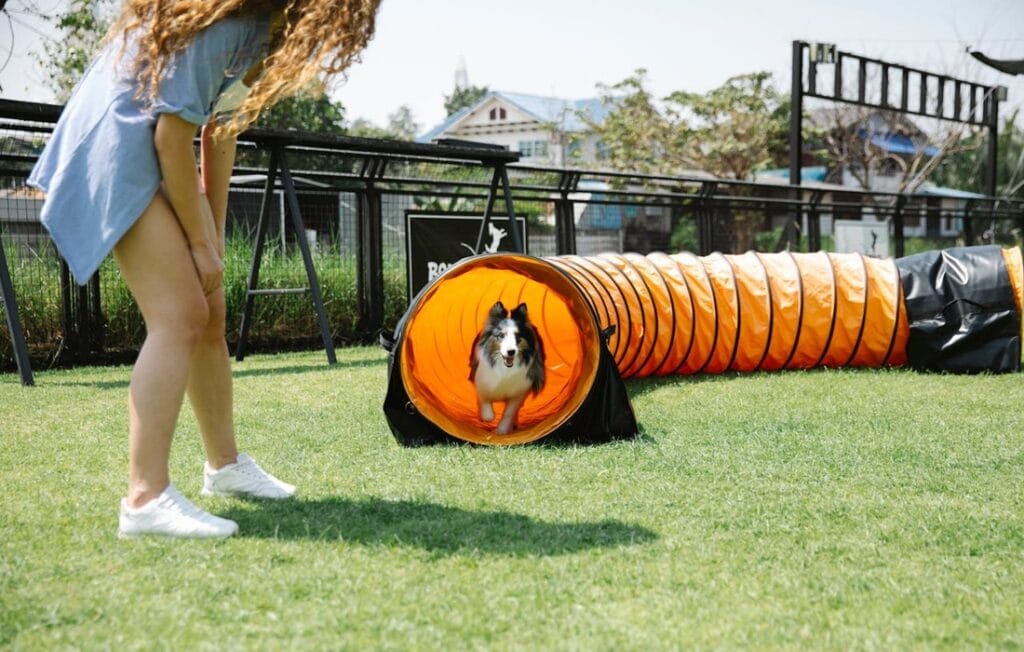

Dog agility courses are made up of several different obstacles, each requiring specific skills and techniques. Here’s a breakdown of the most common obstacles and how to train for them.
1. Jumps
Jumps are one of the simplest yet most important obstacles in agility training. They can vary in height, width, and style, but the basic concept is the same: your dog must jump over the bar without knocking it down.
Training Tip: Start with a low bar and encourage your dog to jump over it using positive reinforcement (treats and praise). As your dog becomes more comfortable, you can increase the height of the bar gradually.
2. Tunnels
The tunnel is a flexible, cylindrical obstacle that your dog must run through. It can be intimidating for some dogs at first, but with the right training, most dogs will quickly learn to enjoy it.
Training Tip: Introduce the tunnel slowly, using treats to lure your dog into the entrance. Begin with a short, straight tunnel, then gradually increase its length and add curves to simulate more complex course layouts.
3. Weave Poles
Weaving is a challenging agility skill that requires your dog to navigate through a series of vertical poles in a zigzag pattern.
Training Tip: Start with just two poles, allowing your dog to get used to weaving between them. Gradually add more poles and increase the difficulty by creating tighter weaving patterns.
4. Dog Walk
The dog walk is a long, elevated platform that requires your dog to walk across a narrow board. This obstacle tests balance, focus, and confidence.
Training Tip: Start by practicing on the ground or with a low platform, gradually raising the height as your dog becomes more comfortable. Use a leash and guide your dog along the path until they gain confidence.
5. A-Frame
The A-frame is a large, slanted structure that your dog must climb up and down. It helps build strength and coordination.
Training Tip: Begin with a gentle slope and reward your dog for touching the contact zones at the top and bottom. Over time, you can increase the height and difficulty.
6. Seesaw
The seesaw (or teeter-totter) is a pivoting board that your dog must walk across. As the dog walks to the center, the board tilts, and the dog must maintain their balance.
Training Tip: Use a low seesaw to start and guide your dog through the motion. Encourage them to stay balanced as the board tilts, and reward them for completing the obstacle.
Tips for Effective Dog Agility Training
To succeed in dog agility, consistency, patience, and positive reinforcement are key. Here are some additional tips to help you and your dog excel:
- Use Positive Reinforcement: Reward your dog with treats, praise, or play when they successfully complete an obstacle. Positive reinforcement encourages good behavior and helps your dog associate agility training with fun.
- Be Patient: Agility training can be challenging for both you and your dog, especially at the beginning. Don’t rush the process—take the time your dog needs to learn each skill at their own pace.
- Short, Frequent Sessions: Dogs can become fatigued or distracted during long training sessions. Keep training sessions short (10-20 minutes) but frequent, to maintain your dog’s focus and prevent burnout.
- Stay Consistent with Commands: Use the same cues every time for each obstacle. Consistency will help your dog understand what you’re asking and reduce confusion.
- Mix Up Training: Change up the course layout to keep things interesting and challenging. This will also help your dog become adaptable to different course setups.
- Use a Leash or Harness if Necessary: For safety, especially during the early stages, keep your dog on a leash or harness. This will allow you to maintain control while they learn the ropes.
Common Mistakes to Avoid in Dog Agility Training
- Moving Too Fast: Avoid pushing your dog to progress too quickly. Mastery takes time, and rushing through the basics can lead to confusion and frustration for both you and your dog.
- Inconsistent Training: Sporadic or inconsistent training will hinder your dog’s progress. Regular practice is essential for building skills and improving performance.
- Using Negative Reinforcement: Avoid using punishment or negative reinforcement, as it can damage the bond between you and your dog. Stick to positive methods, such as rewards and praise.
- Lack of Focus: Agility requires full attention and focus from both the handler and the dog. Avoid distractions during training and practice in a calm, quiet environment.
Final Thoughts
Dog agility training is a rewarding experience for both you and your dog. It strengthens your bond, provides mental and physical stimulation, and improves overall behavior. Whether you’re training just for fun or aiming to compete, the key to success is consistency, patience, and positive reinforcement.
By following this guide and committing to regular practice, you’ll be well on your way to creating a confident, skilled agility dog who enjoys every moment of the journey. So grab your leash, set up an obstacle course, and start training today!




